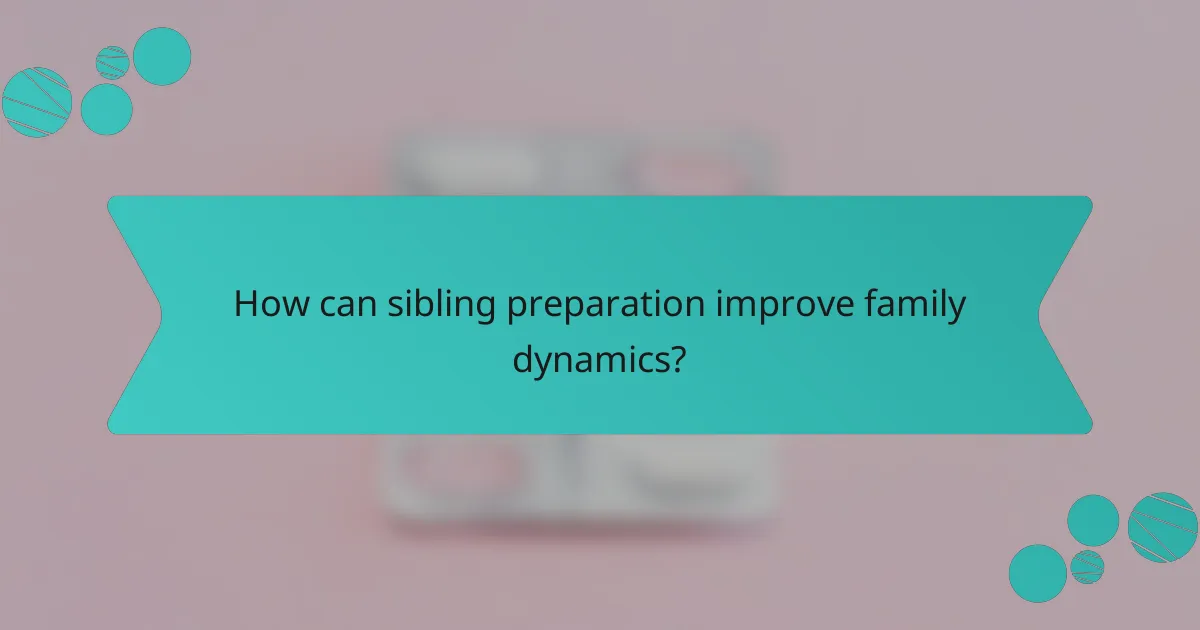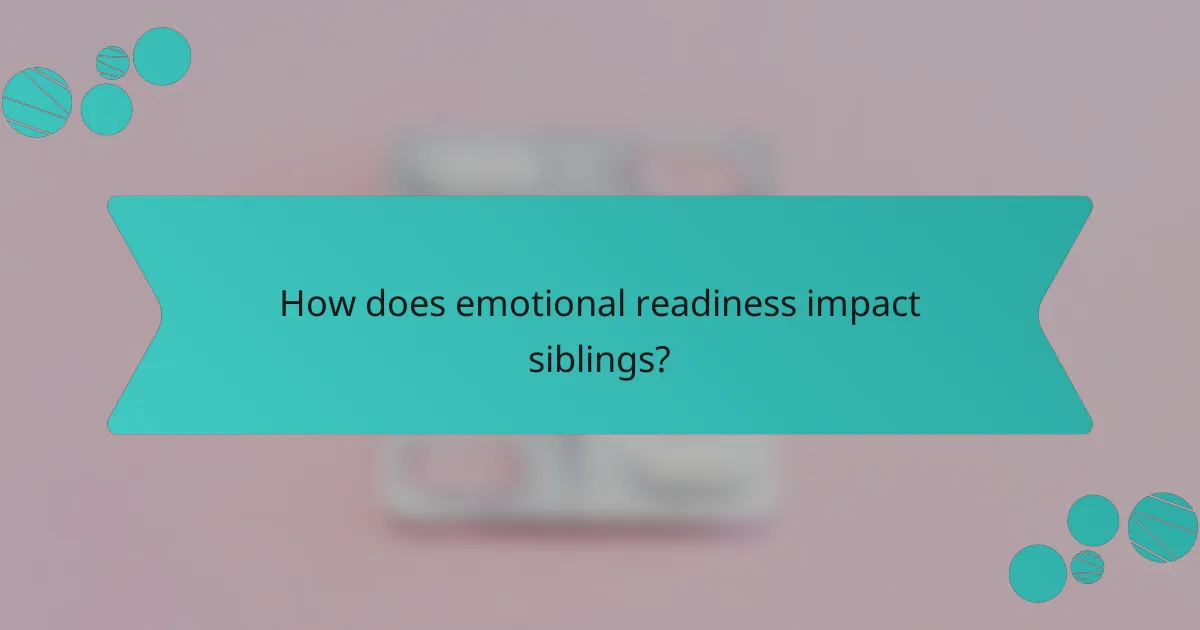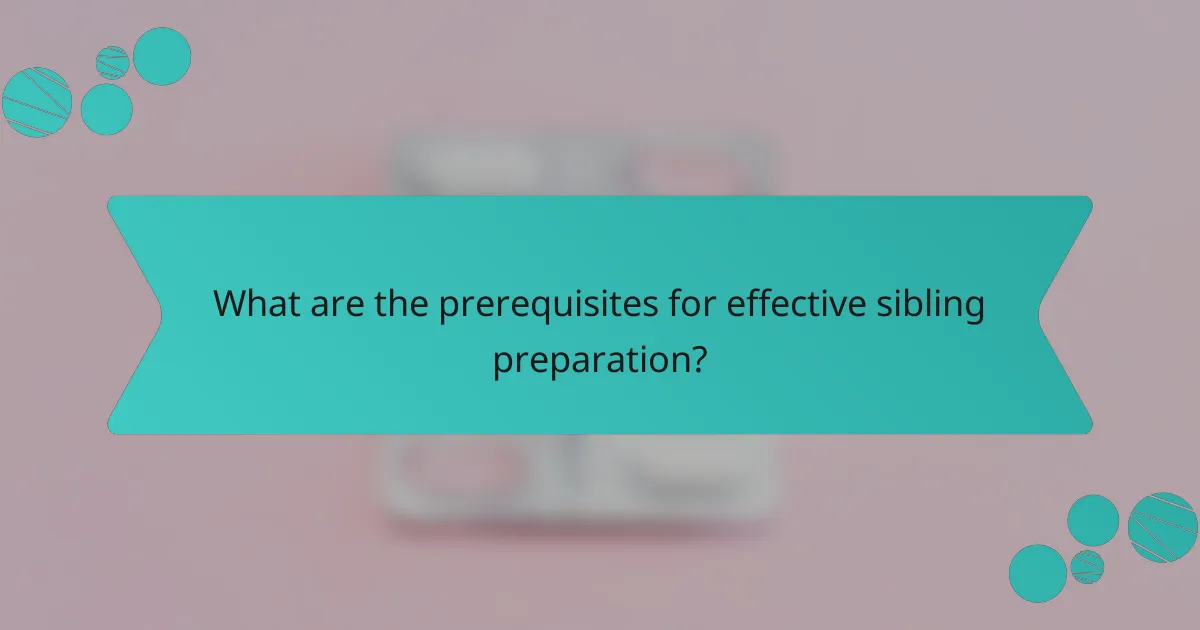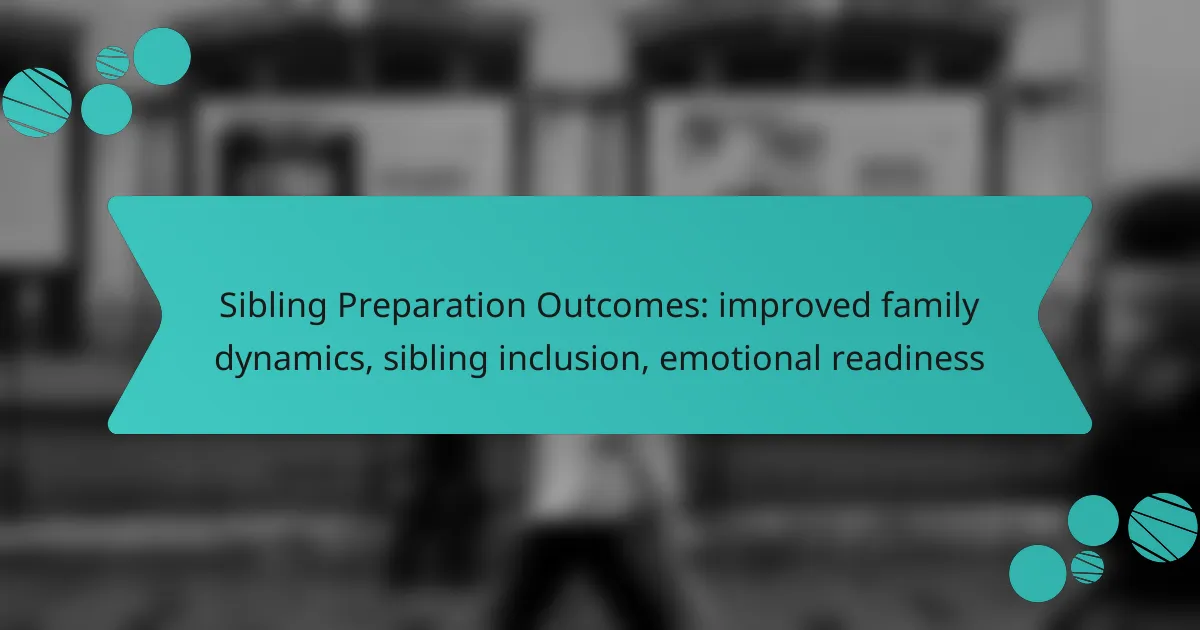Sibling preparation plays a crucial role in enhancing family dynamics by creating a supportive atmosphere where children feel included and emotionally equipped for new changes. By fostering open communication and shared experiences, families can help siblings adapt to their evolving roles, ultimately leading to stronger relationships and a more harmonious household.

How can sibling preparation improve family dynamics?
Sibling preparation can significantly enhance family dynamics by fostering a supportive environment where children feel included and emotionally ready for changes. This proactive approach helps siblings adapt to new family roles, leading to stronger relationships and a more harmonious household.
Enhanced communication skills
Preparing siblings for new family members encourages open dialogue about feelings and expectations. This practice helps children articulate their thoughts and concerns, leading to improved understanding among family members.
For instance, parents can facilitate discussions about the upcoming changes, allowing siblings to express their emotions. This not only builds communication skills but also reinforces the idea that their feelings are valid and important.
Stronger emotional bonds
Sibling preparation fosters stronger emotional connections by encouraging shared experiences and mutual support. When siblings are involved in the preparation process, they develop a sense of teamwork and collaboration.
Activities such as planning for the new sibling’s arrival or participating in family discussions can create lasting memories. These shared experiences help siblings feel more connected and invested in each other’s well-being.
Reduced sibling rivalry
Effective sibling preparation can lead to a decrease in rivalry by promoting inclusivity and understanding. When siblings are prepared for changes, they are less likely to feel threatened or jealous of each other.
Parents can set clear expectations and provide opportunities for siblings to bond, such as engaging in joint activities or responsibilities. This proactive approach helps mitigate competition and fosters a supportive family environment.

What strategies promote sibling inclusion?
Effective strategies for promoting sibling inclusion focus on fostering shared experiences, encouraging open communication, and involving siblings in important decisions. These approaches help create a supportive environment where all siblings feel valued and connected.
Shared activities and responsibilities
Engaging siblings in shared activities can strengthen their bond and promote inclusion. Consider organizing family game nights, collaborative projects, or shared chores that require teamwork. These experiences allow siblings to work together, fostering a sense of unity.
Assigning responsibilities that require cooperation, such as planning a family outing or taking care of a pet, can also enhance their relationship. This not only teaches accountability but also emphasizes the importance of collaboration.
Open discussions about feelings
Encouraging open discussions about feelings is crucial for sibling inclusion. Create a safe space where siblings can express their emotions and concerns without judgment. This practice helps them understand each other’s perspectives and fosters empathy.
Regular family meetings can be an effective way to facilitate these discussions. During these meetings, siblings can share their thoughts and feelings, allowing for deeper connections and better conflict resolution.
Involvement in decision-making
Involving siblings in decision-making processes can significantly enhance their sense of belonging. When siblings participate in choices related to family activities or rules, they feel more invested in the family dynamic. This inclusion can lead to improved cooperation and respect among siblings.
Consider using a voting system for decisions like weekend plans or family trips. This democratic approach not only empowers siblings but also teaches them valuable lessons about compromise and collaboration.

How does emotional readiness impact siblings?
Emotional readiness significantly influences how siblings interact and support each other. When siblings are emotionally prepared, they are more likely to foster positive relationships, leading to improved family dynamics and inclusion.
Increased empathy and understanding
Emotional readiness enhances siblings’ ability to empathize with one another. When they understand each other’s feelings and experiences, it creates a supportive environment where they can share their thoughts openly.
For example, an emotionally ready sibling may recognize when another is feeling left out and take steps to include them in activities. This understanding can strengthen their bond and promote a sense of belonging within the family.
Better coping mechanisms
Siblings who are emotionally prepared tend to develop better coping strategies for dealing with challenges. They learn to express their feelings constructively, which helps them navigate conflicts more effectively.
For instance, when faced with a stressful situation, emotionally ready siblings might discuss their feelings rather than resorting to anger or withdrawal. This proactive approach can lead to healthier interactions and a more resilient family unit.
Improved conflict resolution
Emotional readiness equips siblings with the skills necessary for resolving conflicts amicably. They are more likely to approach disagreements with a mindset focused on finding solutions rather than winning arguments.
Practicing open communication and active listening can facilitate effective conflict resolution. Siblings who are emotionally prepared may use techniques such as taking turns speaking or summarizing each other’s points to ensure mutual understanding, ultimately leading to stronger relationships.

What are the prerequisites for effective sibling preparation?
Effective sibling preparation requires a combination of parental involvement, age-appropriate discussions, and a safe environment. These elements help foster improved family dynamics, sibling inclusion, and emotional readiness for the new family member.
Parental involvement and support
Parental involvement is crucial for effective sibling preparation. Parents should actively engage with their children, discussing the upcoming changes and addressing any concerns. This involvement helps siblings feel valued and included in the family transition.
Support can take various forms, such as one-on-one time with each child, reading books about becoming a sibling, or involving them in preparations for the new baby. These actions reinforce the message that their feelings and opinions matter.
Age-appropriate discussions
Having age-appropriate discussions is essential for helping siblings understand their new role. Younger children may benefit from simple explanations and visual aids, while older siblings can handle more in-depth conversations about emotions and responsibilities.
For instance, using storybooks that depict sibling relationships can help younger children grasp the concept of sharing attention and love. Older children might appreciate discussions about how they can help care for the baby, fostering a sense of responsibility.
Creating a safe environment
Creating a safe environment is vital for sibling preparation. This includes both physical safety and emotional security. Parents should ensure that the home is a welcoming space for the new baby while also addressing the older sibling’s feelings.
Encouraging open communication allows siblings to express their emotions without fear of judgment. Parents can establish routines that include both the new baby and the older sibling, promoting a sense of belonging and stability in the family dynamic.

What are the long-term benefits of sibling preparation?
Sibling preparation can lead to improved family dynamics, enhanced sibling inclusion, and greater emotional readiness. These benefits contribute to a more harmonious family environment and foster positive relationships among siblings.
Lasting family cohesion
Sibling preparation encourages lasting family cohesion by promoting understanding and empathy among siblings. When children are prepared for the arrival of a new sibling, they are more likely to feel included and valued, which strengthens family bonds.
Activities such as discussing feelings, sharing responsibilities, and involving older siblings in the baby’s care can help solidify these connections. Families that engage in these practices often report a more supportive home atmosphere and reduced sibling rivalry.
Positive social skills development
Preparing siblings for a new family member enhances their social skills, as they learn to communicate, share, and cooperate. This preparation often involves role-playing scenarios that teach children how to express their feelings and navigate new dynamics.
For instance, older siblings might practice taking turns or resolving conflicts, which are essential skills both at home and in broader social settings. As a result, children who undergo sibling preparation tend to exhibit better emotional regulation and interpersonal skills throughout their lives.
